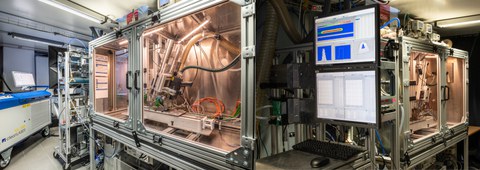LaDECO
Table of contents
LaDECO: Qualification of laser decontamination based techniques for the use in nuclear decommissioning
| Project manager: |
Prof. Dr.-Ing. habil. Antonio Hurtado |
| Contributor: |
Dr.-Ing. Anne-Maria Reinecke |
| Duration: | 10/2019 to 09/2022 |
| Funding: | BMBF |
| Funding code: | 15S9418A |
| Cooperation: |
|
| Associated partner: | Kerntechnische Entsorgung Karlsruhe |
| Joint project coordinator: | TU Dresden - WKET |
Brief description
Joint project:
The project LaDECO aims on the decontamination of coated concrete surfaces in nuclear facilities to amplify the knowledge in process safety and to develop techniques for automatic process control. An important focus is the characterization of secondary emissions (particles and gases), due to their nanostructured behaviour. In this context, the relationship between process parameters and particle properties as well as the gas composition should be clarified. In addition, the thermal conversation of the coatings, which are converted into gases during the laser-based decontamination, as well as the dependencies between the particle formation and process parameters are investigated. The aim is to evaluate the toxic hazards of the released secondary emissions and to determine the input parameters for a suitable filter selection.
The second focus of the joined project is to proof the process reliability in practical use. The damage of optical laser components by γ-radiation has to be excluded as well as a non-contact imaging process for the identification of paint coatings on concrete surfaces will be developed and tested.
Subproject WKET:
In the sub-project, a test module for particle measurement during the laser-based paint decomposition will be designed and realized. The measurements are aimed to the investigation of influencing parameters like different laser sources, paint systems and laser parameters on the particle formation. As a result, a model for particle formation during the laser process will be developed. This model is the basis for the safety-related evaluation of a filter system. Another focus is the irradiation of optical laser components to exclude damage in a high-dose field and thus to identify the application limits of the laser-based decontamination, for e.g. in "hot cells”. The work will be completed with the practical demonstration of radiological decontamination.

Search field LaDECO

